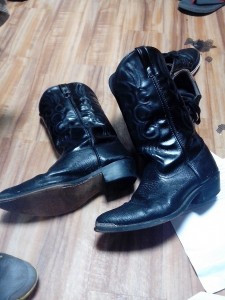Stepping into a honkytonk for the first time can feel like entering another world. The music is lively, the atmosphere is buzzing, and then you see it – a crowd moving in sync, performing what looks like a choreographed dance but with effortless fun. That’s the magic of line dancing, and it’s all thanks to learning a few key Line Dancing Steps.
For someone unfamiliar, the idea of joining in might seem daunting. I remember my first time in Nashville. I wasn’t a country music aficionado, cowboy boots weren’t my style, and the Southern charm was a whole new experience. But the pull of the music and the energy of the city was undeniable. When I found myself at the Wild Horse Saloon, a renowned line dancing venue, I was hesitant but curious. What I discovered was that line dancing is incredibly accessible, especially when you break it down to its fundamental line dancing steps.
Why Line Dancing Steps Make it Easy to Join the Fun
The beauty of line dancing isn’t in complex choreography, but in the repetition of line dancing steps. These steps are usually taught at the beginning of a song by an instructor, and then repeated throughout the track. This standardized approach is what makes line dancing so inclusive and enjoyable, even for absolute beginners. There’s no need for a partner, no pressure to be a perfect dancer, and no fear of looking silly because, honestly, everyone is focused on following the same line dancing steps and having a good time.
Think of it as a guided group activity. The line dancing steps act as a common language, allowing a crowd of strangers to move together in harmony. This shared experience is a big part of the appeal. It’s less about individual performance and more about collective enjoyment. You quickly realize that mastering a few basic line dancing steps is your ticket to joining in the vibrant social scene of a honkytonk.
Getting Started with Basic Line Dancing Steps
While there are countless variations, many line dances are built upon a foundation of fundamental line dancing steps. These might include:
- The Grapevine: A sideways step sequence, typically involving stepping to the side, stepping behind, stepping to the side again, and then tapping or stepping to close.
- The Heel Strut: A step forward or to the side where you place your heel down first, then lower your toes.
- The Kick Ball Change: A quick sequence involving a kick, stepping back on the ball of your foot, and then changing weight back to the other foot.
- The Pivot Turn: A simple turn made by pivoting on the balls of your feet.
These are just a few examples, and many beginner line dances utilize combinations and variations of these basic line dancing steps. The key is to start simple and gradually learn more. Many venues, like the Wild Horse Saloon, offer lessons or have instructors who guide dancers through the line dancing steps before and during songs.
Popular Line Dances and Recognizable Steps
You might be surprised to learn that you already know some popular line dances! Dances like the “Cupid Shuffle” and “The Wobble,” often played at social events and parties, are essentially line dances with easily learned line dancing steps. These dances prove how accessible and widespread line dancing has become. They often feature repetitive and catchy line dancing steps that are easy to pick up even without prior experience.
The beauty is that once you become familiar with a few core line dancing steps, you’ll start to recognize them in different dances. This makes learning new line dances much easier and allows you to jump in and participate wherever you find yourself, whether it’s a Nashville honkytonk or a local dance hall.
Embrace the Fun and Learn the Steps
My first line dancing experience was a testament to the welcoming nature of this dance style. Despite my initial hesitation and lack of country music expertise, the simple and repetitive line dancing steps allowed me to join in the fun and feel like part of the crowd. It wasn’t about being a skilled dancer; it was about embracing the energy, learning the steps together, and enjoying the communal spirit.
So, if you’re curious about line dancing, don’t be intimidated. Focus on learning the basic line dancing steps, find a welcoming venue or online tutorial, and get ready to have a blast. You might just discover a new favorite way to move and enjoy music, boots or no boots!


